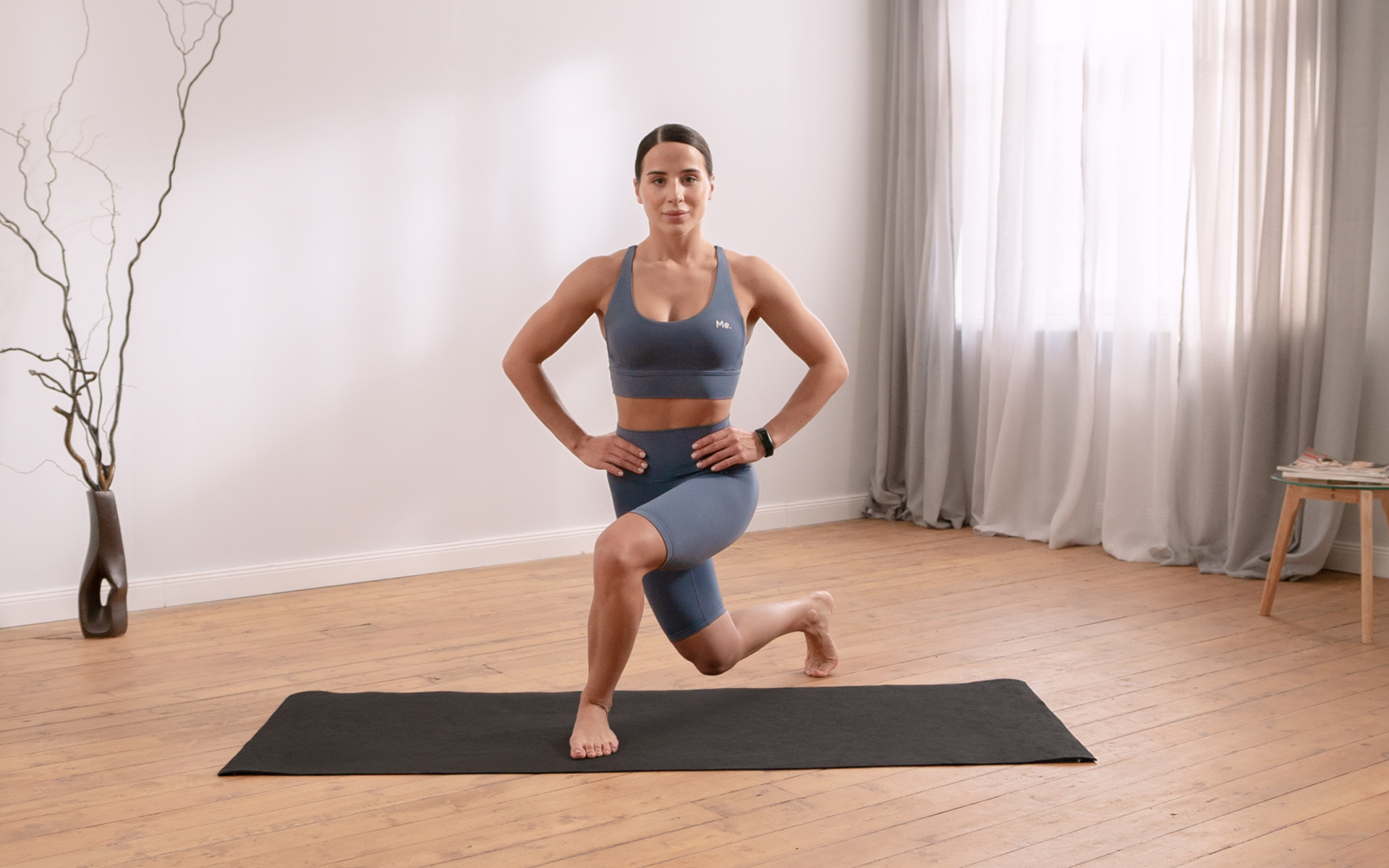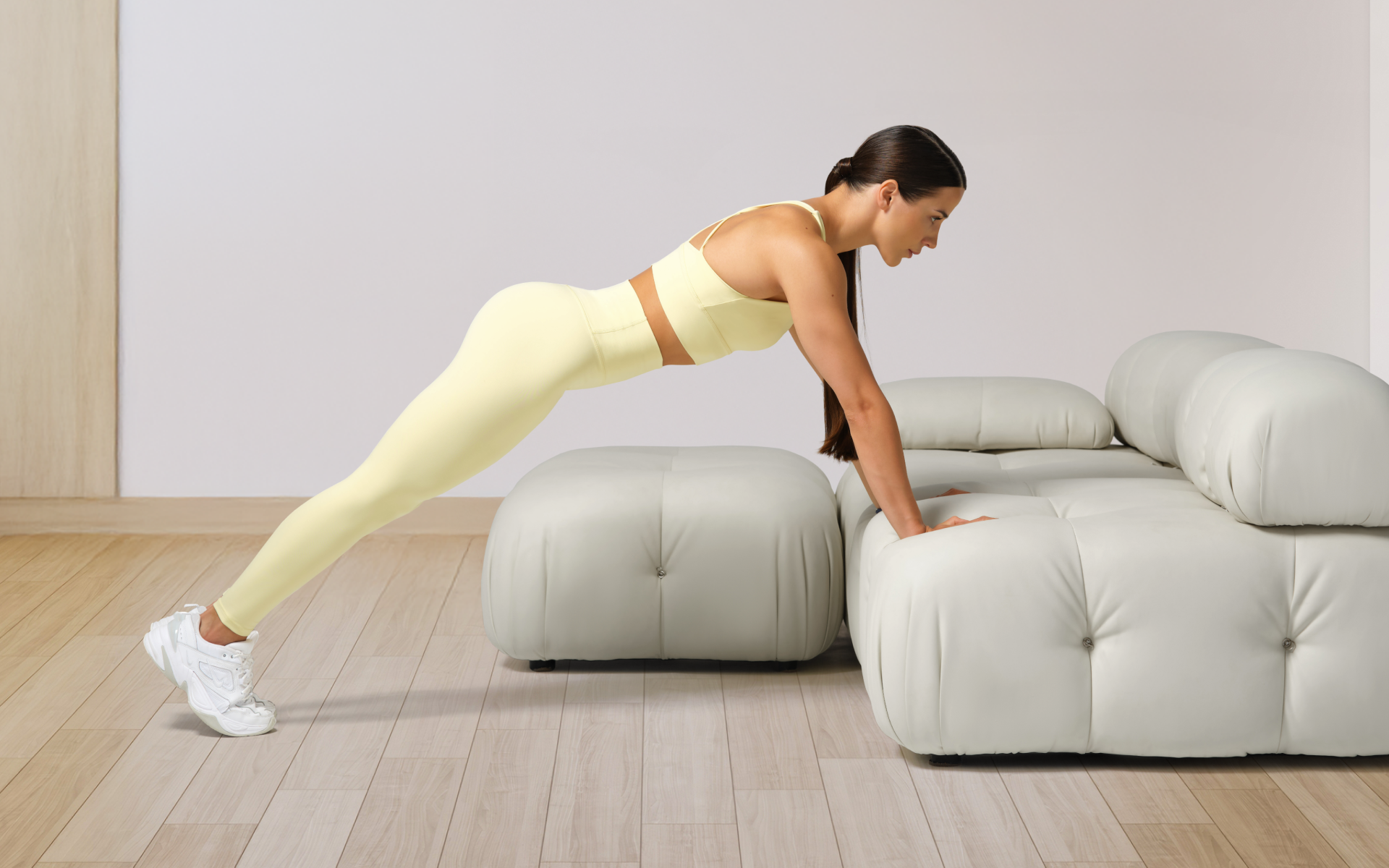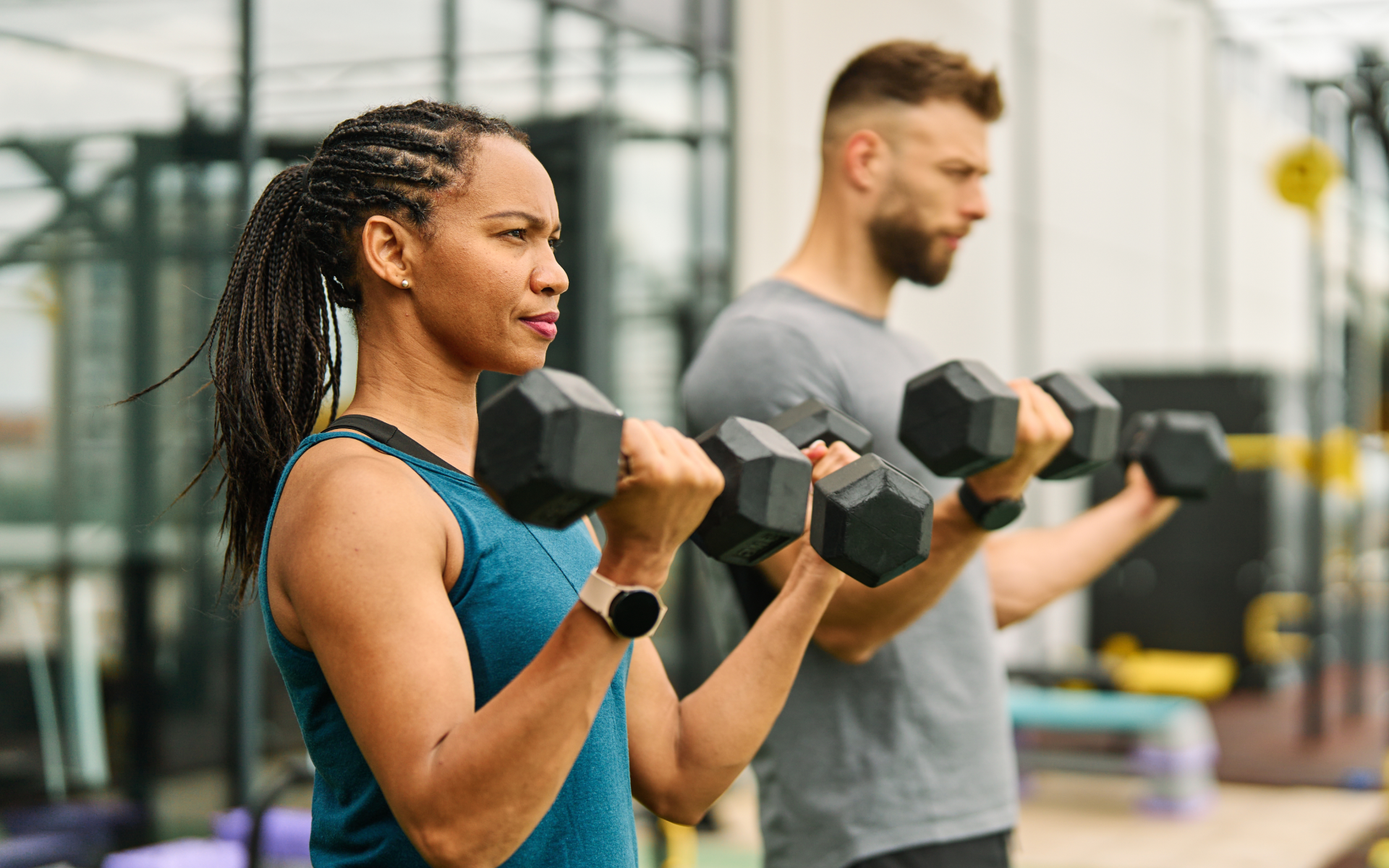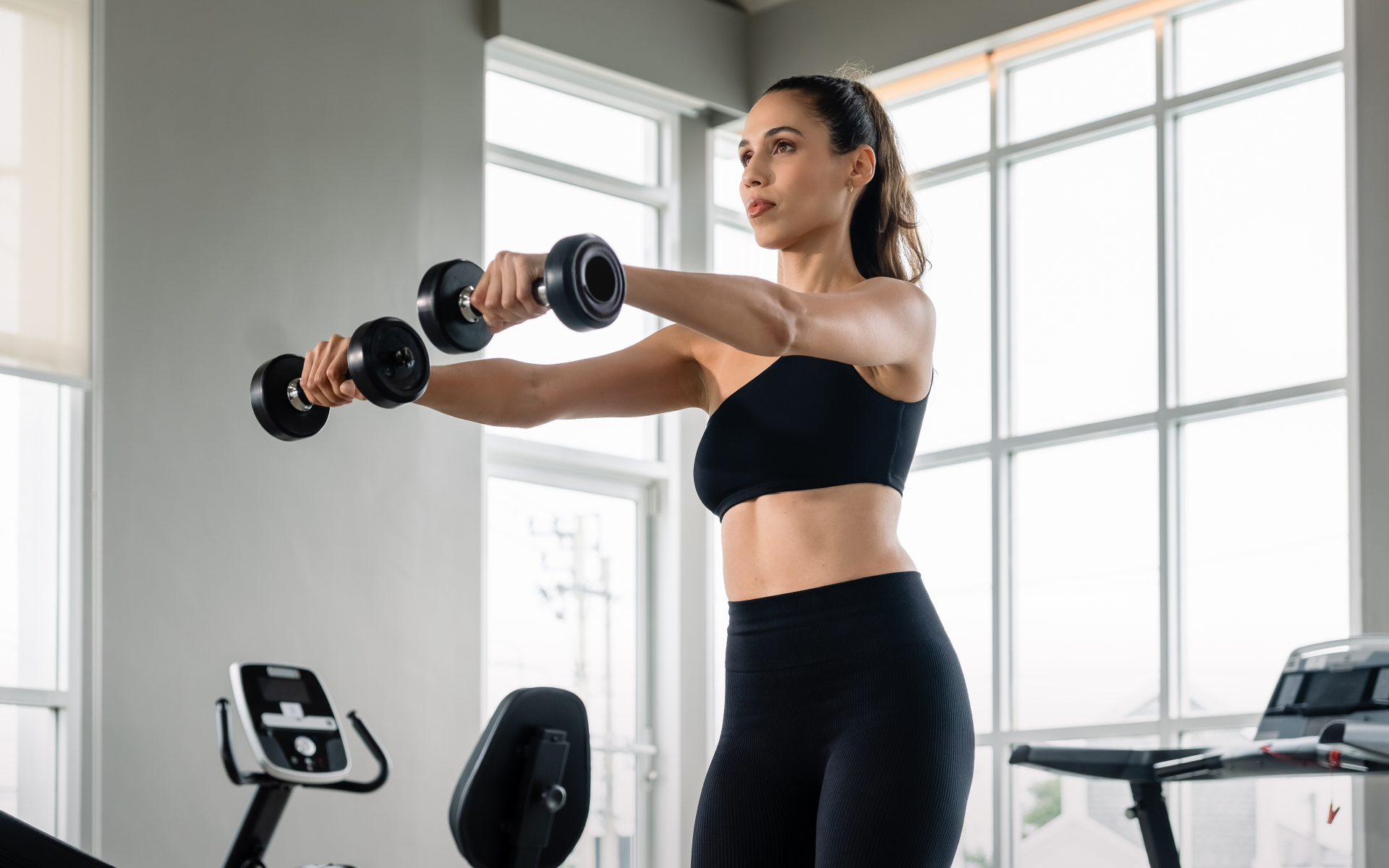Short bursts of exercise that fit into even the busiest schedules, or micro workouts, have been increasingly popular in the fitness world in recent years. Proponents highlight their efficacy and efficiency, asserting that they provide a feasible option for time-constrained people who are seeking to improve their fitness levels.
But can you rely on micro workouts to lose weight? Let’s look at the science behind micro workouts, exploring their potential impact on shedding pounds and sculpting a leaner physique, and let’s answer the question – do micro workouts work?
Do 5-minute workouts really work?
The biggest question people often have is, “Do micro workouts work?” A micro workout plan has become popular in the fitness industry, providing a quick fix for both novices and weight loss aficionados. Micro workouts for weight loss promise quick bursts of activity to help shed pounds, while micro workouts for beginners provide a gentle introduction to exercise.
But do these short courses really live up to the hype? (3) Let’s examine the effectiveness of 5-minute workouts and look at how they can increase metabolism, burn calories, and meet the demands of novices who are just starting out in the fitness world.
- Efficiency: Micro workouts are a time-efficient method for losing weight that allows people to fit quick bursts of exercise into their hectic schedules.
- Calorie Burn: Despite their brief duration, these exercises can help with weight loss efforts by increasing calorie expenditure. (1)
- Metabolic Boost: Even short workouts can increase metabolism, which may improve the body’s capacity to burn calories all day long.
- Beginner-Friendly: Micro workouts offer a gentle start to fitness for beginners, helping them develop self-assurance and create a regular training schedule.
- Consistency: As micro workouts are brief, they promote consistency, making it simpler for people to maintain their fitness objectives over time.
- Adaptability: As these exercises can be customized to meet the fitness levels of every individual, both novice and expert exercisers will find them beneficial and accessible.
- Motivation: Short workouts can provide a sense of success and progress on your fitness journey, which can increase motivation and morale.
- Long-Term Benefits: Although a single session may not seem like much, regular micro exercises can have a big impact on weight loss and general fitness levels over time. (7)
Lean and toned up body isn’t just a far-fetched fantasy. Check out the BetterMe app and watch it propel your weight loss journey into high gear!
Is a small workout better than nothing?
In the realm of fitness, the concept of incorporating micro workouts at home or micro workouts every hour has gained momentum. However, amidst hectic schedules and competing priorities, the question persists: do micro workouts work or is a small workout truly better than doing nothing? Advocates of micro workouts argue that even the shortest bursts of activity can yield significant benefits for physical health and well-being. (8)
Let’s look at the merits of embracing micro workouts and examine if these small efforts, whether it’s a few minutes of stretching, a quick walk around the block, or a set of bodyweight exercises, can actually outweigh the drawbacks of remaining sedentary.
Weighing the prospective advantages against the alternative of inactivity is essential when deciding if a brief workout is preferable to doing nothing. Although a single micro workout may not seem like much, the addition of frequent, short workouts can have a significant positive impact on overall health.
Studies have indicated that even brief bouts of physical activity can improve mood and cognitive performance, increase metabolism, and improve cardiovascular health. (2) Therefore, even in situations where time is limited, opting to participate in micro workouts can support a healthier lifestyle and lessen the harmful effects of prolonged inactivity.
Furthermore, choosing to put micro workouts ahead of idleness takes mental and emotional health into account in addition to physical health. Finding time to move can be a kind of self-care in the fast-paced, high-stress, and often mental health-related environment of today. (11)
Exercise breaks, even short ones, have been demonstrated to lower stress, boost energy, and improve well-being. For this reason, choosing to engage in a brief workout—a few minutes of bodyweight exercises, a fast walk around the block, or stretching—can be a wise investment in your physical and mental well-being.
Is exercising 15 minutes a day enough?
The idea of micro workouts to lose weight has gained traction in the fitness industry as a potential way for people to get the most out of their exercise routines while adhering to strict schedules.
Although many people believe that micro workouts don’t work, proponents of the theory contend that even 15 minutes a day of physical activity can have a major positive impact on general health and well-being. (9)
Let’s explore the efficacy of a 15-minute micro workout plan and analyze if it offers enough exercise to support fitness and if it can be easily incorporated into hectic schedules.
- Time Efficiency: For people who are balancing multiple responsibilities, a 15-minute micro workout plan provides a time-efficient option that allows the integration of regular exercise into daily routines.
- Cardiovascular Health: Although it’s only 15 minutes long, a concentrated workout can have positive effects on the cardiovascular system, including strengthening the heart, boosting stamina, and reducing the risk of chronic illnesses such as diabetes and heart disease. (18)
- Muscular Strength and Endurance: A micro workout plan may help increase physical strength, endurance, and general functional fitness by including workouts that target several muscle groups.
- Metabolic Boost: Exercise in short bursts can speed up the metabolism and enhance calorie burning during and after a workout, which can help with weight management.
- Mental Health Benefits: It has been proven that regular physical activity, even in modest amounts, improves mood and cognitive performance while also lowering stress, anxiety, and depression. (15)
- Adaptability: An individual’s fitness level, interests, and goals can be catered for with a 15-minute micro workout plan, providing flexibility and modification to suit particular demands.
- Consistency and Habit Formation: A regular physical activity habit can be formed by consistently allocating 15 minutes a day to exercise, which helps lay the foundation for long-term success in terms of fitness and health.
- Accessibility: Micro workouts are accessible to people of all ages and fitness levels as they can be done almost anywhere with little to no equipment.
Read more: Micro Exercise Tips, Types, and Workout Plans for Anyone to Use Anywhere
Can you build muscle with 10-minute workouts?
Building muscle with 10-minute workouts may seem like a stretch, but the effectiveness of targeted exercises, such as an abs and butt workout, can surprise even the most skeptical fitness enthusiasts. (13) While traditional wisdom often emphasizes lengthy gym sessions and strict dietary regimens, recent trends have highlighted the potential of short, intense workouts to yield significant results. By strategically incorporating compound movements and progressive overload techniques, people can stimulate muscle growth and development within brief timeframes. (17)
However, it’s important to note that while 10-minute workouts can contribute to muscle building, they’re most effective when complemented by a balanced diet that provides adequate nutrients rather than a sole reliance on extreme measures such as a 5-day liquid diet. Therefore, with consistency, proper form, and the right nutritional support, even the shortest workouts can pave the way to a stronger, more sculpted physique.
Here are some examples of a 10-minute workout:
1. High-Intensity Interval Training (HIIT):
- 1 minute of jumping jacks
- 1 minute of push-ups
- 1 minute of body-weight squats
- 1 minute of mountain climbers
- 1 minute of plank
Repeat the circuit for a total of two rounds
2. Core Blast:
- 1 minute of bicycle crunches
- 1 minute of Russian twists with or without weights
- 1 minute of the plank with shoulder taps
- 1 minute of leg raises
- 1 minute of flutter kicks
Repeat the circuit for a total of two rounds
3. Full-Body Express:
- 1 minute of burpees
- 1 minute of jump lunges
- 1 minute of the plank with leg lifts
- 1 minute of Russian twists with or without weights
- 1 minute of shoulder push-ups
Repeat the circuit for a total of two rounds
4. Abs and Butt Workout
- 1 minute of glute bridges
- 1 minute of Russian twists
- 1 minute of flutter kicks
- 1 minute of plank hip dips
- 1 minute of donkey kicks
Repeat the circuit for a total of two rounds
Looking for a way to break the vicious cycle of weight loss and tone up all the jiggly parts? Watch the extra pounds fly off and your muscles firm up with the BetterMe app!
Will 10 reps a day build muscle?
Building muscle typically requires higher levels of intensity and volume in workouts. While low-intensity workouts such as 10 reps a day may have some benefits, such as improving muscular endurance and promoting blood flow to the muscles, they’re unlikely to be sufficient for significant muscle growth on their own. (12)
However, incorporating 10 reps a day as part of a broader fitness routine or as a supplement to higher-intensity workouts can still contribute to overall muscle health and maintenance. It’s important that you tailor your micro workout plan to your individual fitness goals and consult a fitness professional for personalized recommendations. (6) Here are some of the benefits of doing 10 reps a day:
- Muscle Activation: By activating and engaging the targeted muscles, 10 reps a day help promote total muscular health and functionality.
- Improved Muscular Endurance: Muscle endurance is developed by consistently performing 10 reps, which enables muscles to work without becoming fatigued for extended periods of time.
- Consistency: Daily 10-rep workouts help you develop a habit of regular physical activity by fostering consistency in your fitness regimen.
- Maintenance of Muscle Mass: Daily 10-rep exercises can help preserve current muscle mass, avoid muscle atrophy, and promote general muscular health, even if they may not be particularly beneficial for major muscle growth.
- Convenience and Time Efficiency: A daily routine of 10 reps is time-efficient and convenient, which makes it easier to stay committed to fitness goals, even on busy days.
Read more: Your Flat Tummy Workouts Just Got Better With This Guide
FAQs
How many micro workouts should you perform per day?
In the quest for efficient fitness solutions, the efficacy of micro workouts has gained a lot of attention. Proponents tout their effectiveness, particularly in achieving weight loss goals. But the question remains: do micro workouts work, and how many should you incorporate into your daily routine? Specifically, for those who are aiming to shed pounds, the concept of micro workouts to lose weight has become a focal point. (4)
When determining the optimal frequency of micro workouts per day, several factors must be considered, each of which influences the effectiveness of these short bursts of exercise in helping with weight loss.
- Individual Fitness Levels: The optimal quantity of micro workouts per day varies based on individual fitness level. Starting with just one or two micro workouts at home a day and progressively increasing the frequency or duration as you gain endurance and stamina may be beneficial for beginners. At the same time, seasoned athletes may be able to tolerate more frequent workouts without the risk of overtraining.
- Intensity and Duration: The duration and intensity of each micro workout also influence the suggested frequency. While shorter, low-intensity workouts can allow for more frequent engagement throughout the day, higher-intensity workouts may require longer recovery periods between sessions.
- Goals and Preferences: The number of micro workouts a person does each day is mostly dependent on their preferences and personal fitness goals. To increase metabolic rate and burn more calories, people who are trying to lose weight could choose to work out more regularly. On the other hand, those who prioritize maintaining or gaining muscle mass may decide to engage in fewer, more strenuous exercises.
- Lifestyle Constraints: Several micro workouts a day can be feasible, depending on lifestyle circumstances such as time availability, family obligations, and work commitments. Some people may be able to work out at different times of the day, while others may need to focus on longer, more concentrated workouts.
- Recovery and Rest: To maximize the benefits of micro workouts, adequate rest and recuperation are necessary. Overtraining can impede the achievement of weight loss objectives by causing exhaustion, injuries, and burnout. Long-term optimal results are promoted by ensuring the body has enough time to mend and adapt through a balance between the frequency of micro workouts and enough rest periods.
Are quick workouts worth it?
In the realm of fitness, opinions vary regarding the efficacy of quick workouts, particularly in the context of weight loss. While some advocate for the effectiveness of micro workouts for weight loss, others argue that micro workouts don’t work or deliver substantial results. This debate has prompted the question: Do micro workouts work? Quick exercises can be a helpful way for people with hectic schedules or little time for training to include physical activity in their daily routines. These brief bouts of activity are good for sustaining general fitness levels as they raise the heart rate, enhance cardiovascular health, and increase general well-being. (5)
However, when assessing the value of quick workouts, it’s essential to consider how well they perform for reaching particular fitness goals, such as muscle building or weight loss. Although brief workouts can help increase metabolic activity and burn calories, they may not be enough to cause noticeable changes in body composition on their own. Therefore, to obtain their intended results, people who have specific weight loss or muscle-building goals may need to add extra exercise or dietary interventions to their quick workouts.
Furthermore, the value of brief workouts can change depending on their duration, intensity, and frequency. For example, high-intensity interval training (HIIT) exercises are well-known for their capacity to increase metabolic rate and calorie burn in a brief period of time, which makes them particularly useful for people who want to get the most out of their gym time. (10) At the same time, repetitious or low-intensity workouts may not provide as much fitness gain.
In conclusion, personal preferences, objectives, and situations ultimately determine whether quick workouts are worthwhile or not. Some people consider micro workouts to be an important part of their fitness routine due to their accessibility and ease. For others with particular fitness goals, short exercises could be an addition to longer-term exercise and diet regimens. The value of quick workouts ultimately comes from their capacity to meet personal demands and enhance general health and well-being.
What is the power of micro workouts?
The power of micro workouts lies in their ability to offer accessible, time-efficient, and effective solutions for incorporating physical activity into daily life. (14) When considering the question “Do micro workouts work?” evidence suggests that these short bursts of exercise can yield significant benefits for overall health and fitness.
- Accessibility: Micro workouts offer a convenient and accessible way to incorporate physical activity into daily life as they can be performed virtually anywhere and require minimal or no equipment.
- Time Efficiency: Micro workouts are time-efficient, which makes them ideal for those with busy schedules or limited time for exercise. Even short bursts of activity can yield significant health benefits.
- Effectiveness: Research has suggested that micro workouts can have positive effects on cardiovascular health, metabolic function, and mood, despite their short duration.
- Consistency: Micro workouts make it easier to stay consistent with your exercise habits by removing barriers such as time constraints and accessibility issues.
- Long-Term Sustainability: By promoting regular physical activity and removing barriers to exercise, micro workouts contribute to the long-term sustainability of a healthy lifestyle.
In summary, the power of micro workouts lies in their accessibility, time efficiency, and effectiveness in promoting consistent physical activity. By breaking down exercise into manageable increments, micro workouts empower people to prioritize movement and exercise throughout the day, which leads to improved health, fitness, and overall well-being.
Will I lose muscle if I don’t work out for 10 days?
The potential loss of muscle mass is dependent on several factors, including your current fitness level, diet, and overall lifestyle. While taking a break from exercise for 10 days may not result in significant muscle loss for everyone, some individuals may experience a decline in muscle mass if they don’t engage in any form of physical activity during this time period. (16) Here are a few key points to consider:
- Muscle Atrophy: Long-term inactivity can cause muscular atrophy or the decrease of muscle mass as a result of not using the muscles. When muscles are not regularly stimulated through exercise, they may start to shrink and weaken over time.
- Individual Variability: The rate of muscle loss varies between individuals and is dependent on factors such as genetics, age, and baseline fitness level. Generally, individuals who have trained consistently for an extended period are less likely to experience significant muscle loss during a short break than those who are relatively sedentary.
- Nutrition: The preservation and healing of muscles are greatly influenced by diet. Getting enough protein and calories can help prevent muscle loss when you don’t move around a lot. However, a diet that is deficient in nutrients and exercise can make muscle loss more significant.
- Recovery: A brief break from exercise may occasionally be beneficial for the growth and healing of muscles. Muscles can heal and grow stronger during rest periods, particularly after rigorous training cycles. However, long-term inactivity can have negative effects, such as muscle loss.
- Regaining Muscle: The good news is that, in contrast to early muscle growth, muscle memory is a process where muscles restore lost size and strength more quickly after a period of inactivity. As a result, once regular activity is resumed, it is often easier to restore lost muscle mass if muscle loss does occur during a 10-day layoff.
In summary, while taking a 10-day break from exercise may not necessarily lead to significant muscle loss for everyone, it’s important to consider individual factors such as baseline fitness level, diet, and overall lifestyle. Staying active and maintaining a balanced diet can help preserve muscle mass during periods of inactivity while also promoting overall health and well-being.
DISCLAIMER:
This article is intended for general informational purposes only and does not serve to address individual circumstances. It is not a substitute for professional advice or help and should not be relied on for making any kind of decision-making. Any action taken as a direct or indirect result of the information in this article is entirely at your own risk and is your sole responsibility.
BetterMe, its content staff, and its medical advisors accept no responsibility for inaccuracies, errors, misstatements, inconsistencies, or omissions and specifically disclaim any liability, loss or risk, personal, professional or otherwise, which may be incurred as a consequence, directly or indirectly, of the use and/or application of any content.
You should always seek the advice of your physician or other qualified health provider with any questions you may have regarding a medical condition or your specific situation. Never disregard professional medical advice or delay seeking it because of BetterMe content. If you suspect or think you may have a medical emergency, call your doctor.
SOURCES
- 5 Minute Workout Routines to Lose Weight, Get Fit (VeryWellFit, 2021)
- A little movement is better than none: How small micro-workouts can have a big impact (Society of Behavioral Medicine)
- Are 5-Minute Daily Workout Routines Really Beneficial? (Healthline)
- Are micro workouts the answer to getting fit fast? (The Well Nest, 2023)
- Are short workouts effective? (Summa Health, 2020)
- Build Muscle with the 10 Sets 10 Reps Program (Labrada)
- Can five minutes’ exercise a day make you fit? (Irish Times, 2021)
- Do short workouts really make a difference? (Adidas, 2021)
- How 15 Minutes of Exercise Helps with Heart Health (Cooper Aerobics)
- How Do HIIT Workouts Affect Metabolism? (Fit Body Boot Camp, 2023)
- How Even Super-Short Workouts Can Improve Your Health (Time, 2022)
- How many reps do you need to build muscle? It depends on your goals (CNET, 2021)
- The Best 10-Minute Workout for Men To Build Muscle (Eat This, 2023)
- The Power Of “Micro-Workouts” (Medium, 2023)
- The Mental Health Benefits of Exercise (Help Guide)
- Will You Lose Muscle If You Skip Workouts? (The Wellness Corner, 2023)
- Why 10 minutes of exercise a day is better than a long gym session, according to new research (Stylist, 2022)
- Why 15 Minutes of Exercise Is Enough to Transform Your Health in 2024 (CNET, 2024)










